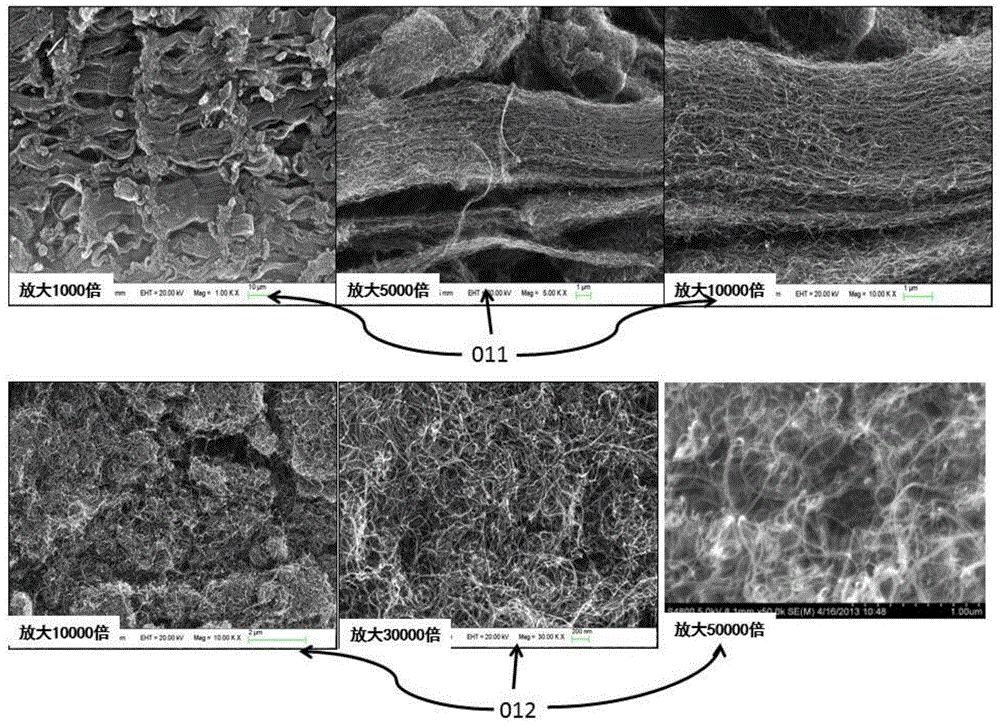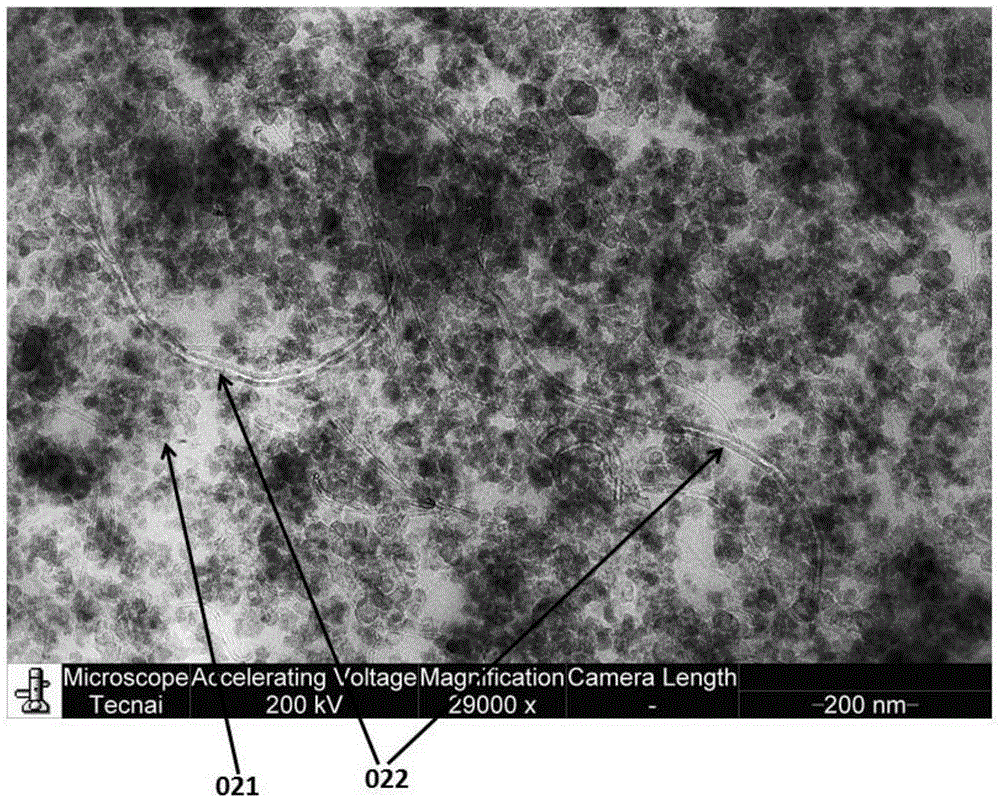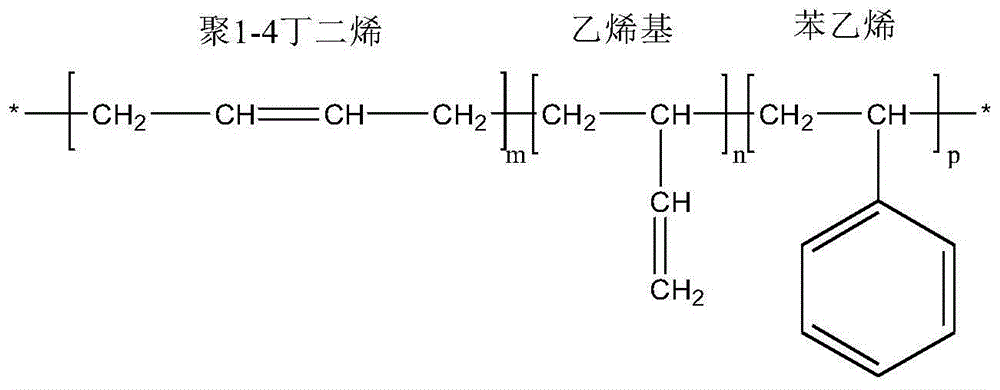Low-hysteresis antistatic tread rubber material for fuel-efficient tires, and preparation method thereof
A technology for fuel-saving tires and tread rubber, applied in the rubber field, can solve the problems of increased tire cost, high price, and difficulty in practical application.
- Summary
- Abstract
- Description
- Claims
- Application Information
AI Technical Summary
Problems solved by technology
Method used
Image
Examples
Embodiment 1
[0089] Example 1: The formula of low-hysteresis antistatic fuel-saving tire tread rubber composite material composition ratio in parts by mass is shown in Table 4.
[0090] Table 4. Formulation of Example 1
[0091]
[0092] The specific mixing process of composite materials:
[0093] Step 1: Add all the rubber, silica, carbon black, silane coupling agent, zinc oxide, and stearic acid into the mixing chamber of the internal mixer for mixing. The mixing temperature should not exceed 120°C. The time is 240 seconds. After debinding, cool to room temperature and stand for 24 hours to obtain a section of masterbatch.
[0094] Step 2: Add a piece of masterbatch obtained in step 1 into the mixing chamber of the internal mixer for mixing. The temperature of the mixing chamber is controlled within the range of 150 to 160°C, and the mixing time is 360 seconds. Parked for 16 hours to obtain the second-stage remix rubber.
[0095] Step 3: Put the two-stage remix rubber, accelerator ...
Embodiment 2
[0096] Example 2: The formula of low hysteresis antistatic fuel-saving tire tread rubber composite material composition ratio in parts by mass is shown in Table 5.
[0097] Table 5. Formulation of Example 2
[0098]
[0099]
[0100] The specific mixing process of composite materials:
[0101] Step 1: Add all the rubber, silica, carbon black, silane coupling agent, zinc oxide, and stearic acid into the mixing chamber of the internal mixer for mixing. The mixing temperature should not exceed 120°C. The time is 240 seconds. After debinding, cool to room temperature and stand for 24 hours to obtain a section of masterbatch.
[0102] Step 2: Put a piece of masterbatch obtained in step 1 into the mixing chamber of the internal mixer for mixing. The temperature of the mixing chamber is controlled within the range of 145 to 160°C, and the mixing time is 400 seconds. Parked for 16 hours to obtain the second-stage remix rubber.
[0103] Step 3: Add the second-stage remix rubbe...
Embodiment 3
[0104] Example 3: The formula of low-hysteresis antistatic fuel-saving tire tread rubber composite material composition ratio in parts by mass is shown in Table 6.
[0105] Table 6. Formulation of Example 3
[0106]
[0107]
[0108] The specific mixing process of composite materials:
[0109]Step 1: Add all the rubber, silica, carbon black, silane coupling agent, zinc oxide, and stearic acid into the mixing chamber of the internal mixer for mixing. The mixing temperature should not exceed 120°C. The time is 240 seconds. After debinding, cool to room temperature and stand for 20 hours to obtain a section of masterbatch. .
[0110] Step 2: Add a piece of masterbatch obtained in step 1 into the mixing chamber of the internal mixer for mixing. The temperature of the mixing chamber is controlled within the range of 145 to 160°C, and the mixing time is 420 seconds. Parked for 16 hours to obtain the second-stage remix rubber.
[0111] Step 3: Add the second-stage remix rub...
PUM
| Property | Measurement | Unit |
|---|---|---|
| specific surface area | aaaaa | aaaaa |
| specific surface area | aaaaa | aaaaa |
| electrical resistivity | aaaaa | aaaaa |
Abstract
Description
Claims
Application Information
 Login to View More
Login to View More - R&D
- Intellectual Property
- Life Sciences
- Materials
- Tech Scout
- Unparalleled Data Quality
- Higher Quality Content
- 60% Fewer Hallucinations
Browse by: Latest US Patents, China's latest patents, Technical Efficacy Thesaurus, Application Domain, Technology Topic, Popular Technical Reports.
© 2025 PatSnap. All rights reserved.Legal|Privacy policy|Modern Slavery Act Transparency Statement|Sitemap|About US| Contact US: help@patsnap.com



